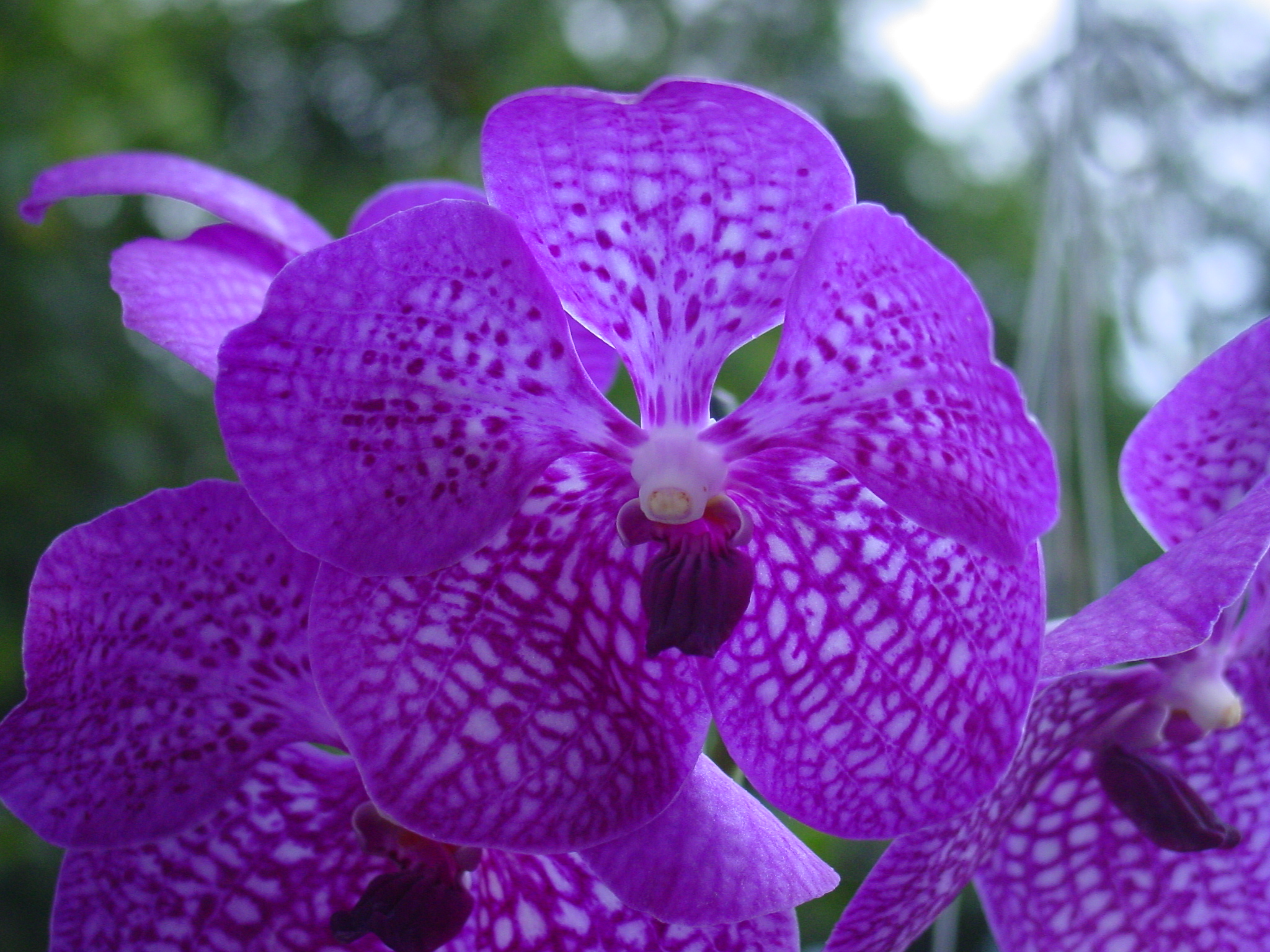|
This vanda
cross expresses the dominant traits of v. tricolor suavis (spotting), the
color contributed by v. coerulea and is darkened up by v. tessellata. Most modern hybrids contain all of these
contributing plants paired with e. sanderiana.
V.
Rothchildiana is a primary hybrid of e. sanderiana and v. coerulea. It combines favorable features of both
species including brilliant color, fuller form, and an increased tolerance
for cool weather.
V. Tessellata
line breeding has resulted in near black clones like V. Tessellata ‘Mary
Motes’ FCC, AOS. These dark color
forms contribute rich, deepened colors to their offspring. |
Breeding Vandas
Genetic
Influence
There is a
veritable paucity of information concerning the dominant characteristics of
many vanda species. Most vanda and
ascocenda crosses consist of predominantly six to eight parents. However, there are over 25 known species,
and a world of untapped genetic potential that may open up the world of vanda
and ascocenda hybridization. The key
to this world may only be open to the daring and the patient, but it stands
to reason that it is nonetheless available. While cattleya
and other orchid hybridizing is entering its golden age and beyond, the line
breeding and exploration of the vanda group is in its relative toddler hood. Early Thai and Hawaiian hybridizing has
moved the breeding out of its infancy, there seems to be a great deal of
undiscovered genetic territory to explore.
Vanda Luzonica
and Tricolor
When it comes
to pink vandas, the most dominant parent is v. luzonica with v. tricolor
suavis falling a close second. Most
of the plants with dark spotting also contain v. tricolor suavis in the
background. Drawbacks include the
often complete dominance of color, very large plants, and smallish flowers. Euanthe
Sanderiana
No other plant
can claim as much influence over the form of the modern vanda as e.
sanderiana. Its dominant
characteristics include large, flat forms and the occasional masking found in
first, second, and third generation crosses.
Drawbacks can include a muddying of colors in the masking, particularly
at the base of the flower sepals and intolerance to the cold. Vanda Coerulea
My blue heaven
can be inherited through the dominant blue and purple hues of coerulea. This parent lends the purple color, tessellation,
long/upright bloom spikes, and cold tolerance. Drawbacks can include drooping giant flowers on overextended
spikes and occasionally a twisted flower form derived from unimproved, jungle-collected
species. These plants may also be
more sensitive to hot temperatures than other vanda species. Vanda
Tessellata
Dark color forms
of v. tessellata lend a great deal of depth, waxy texture and substance, and
occasionally fragrance to offspring.
Some progeny tend to be brown, gray, or slate blue, and could be
considered less desirable colors to pass on. |
V. Loki is a
primary hybrid between v. luzonica and v. tricolor suavis. Note the pink color and unique
barring. When this trait is passed
along in other plants a genetic delay in the genes may cause the color pink
to be expressed as spotting or complete coloration.
Occasionally,
a near white form e. sanderiana contributes its color and masking to its
progeny. This ascocenda is
free-flowering and blooms large white flowers 3-4 times a year. Other alba forms of plants have rarely
been discovered and cloned like the v. coerulea ‘alba’ and ascocentrum
ampullacium ‘alba’
V. tessellata
crosses like v. mimi palmer, v. arjuna, and others offer a wide range of
possibilities for future breeding that may work to both extend the current
genetic pool beyond luzonica, tricolor, sanderiana, and coerulea. Other important future parents may include
v. cristata for its lip and v. denisoniana for its substance. |





